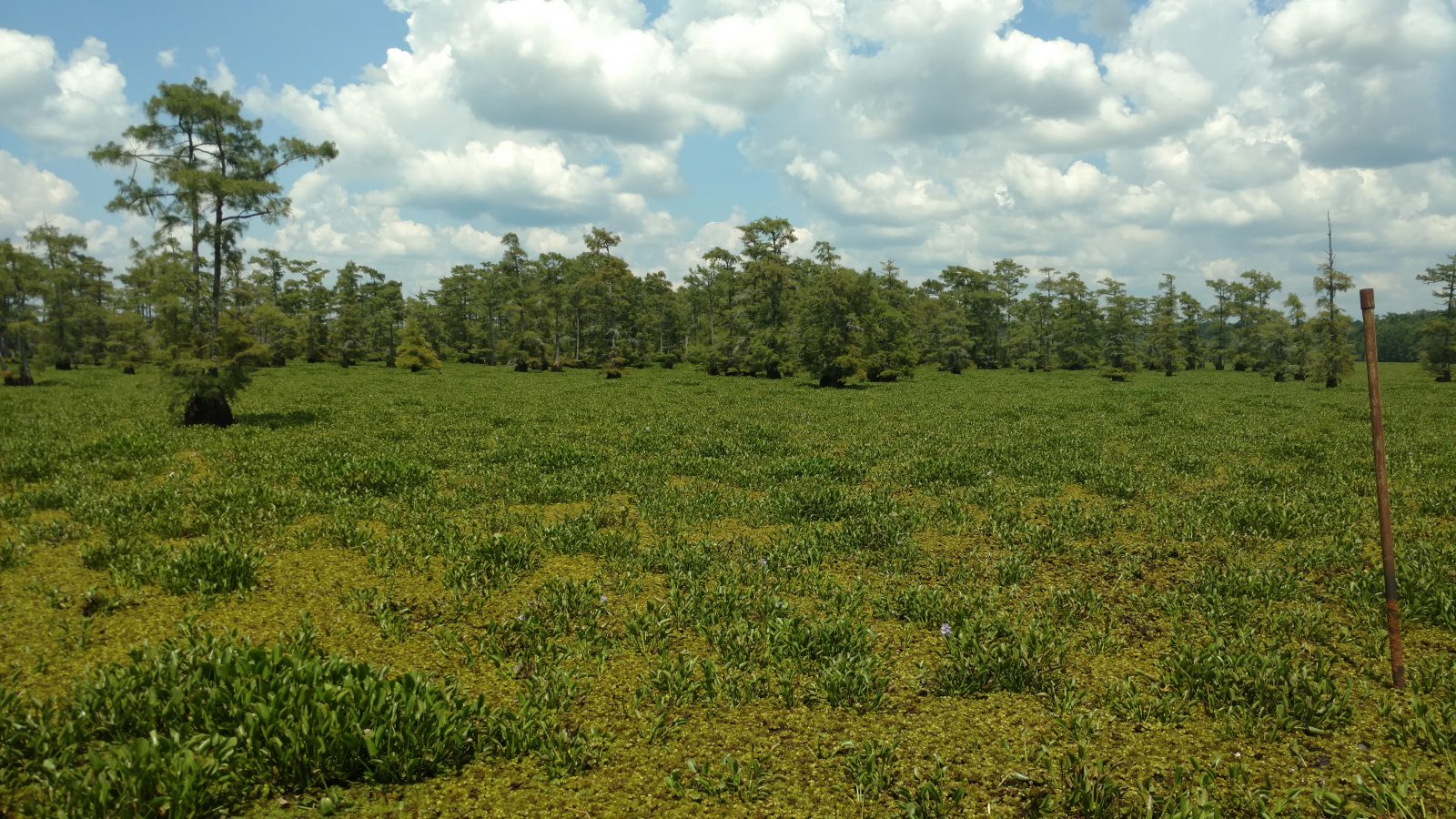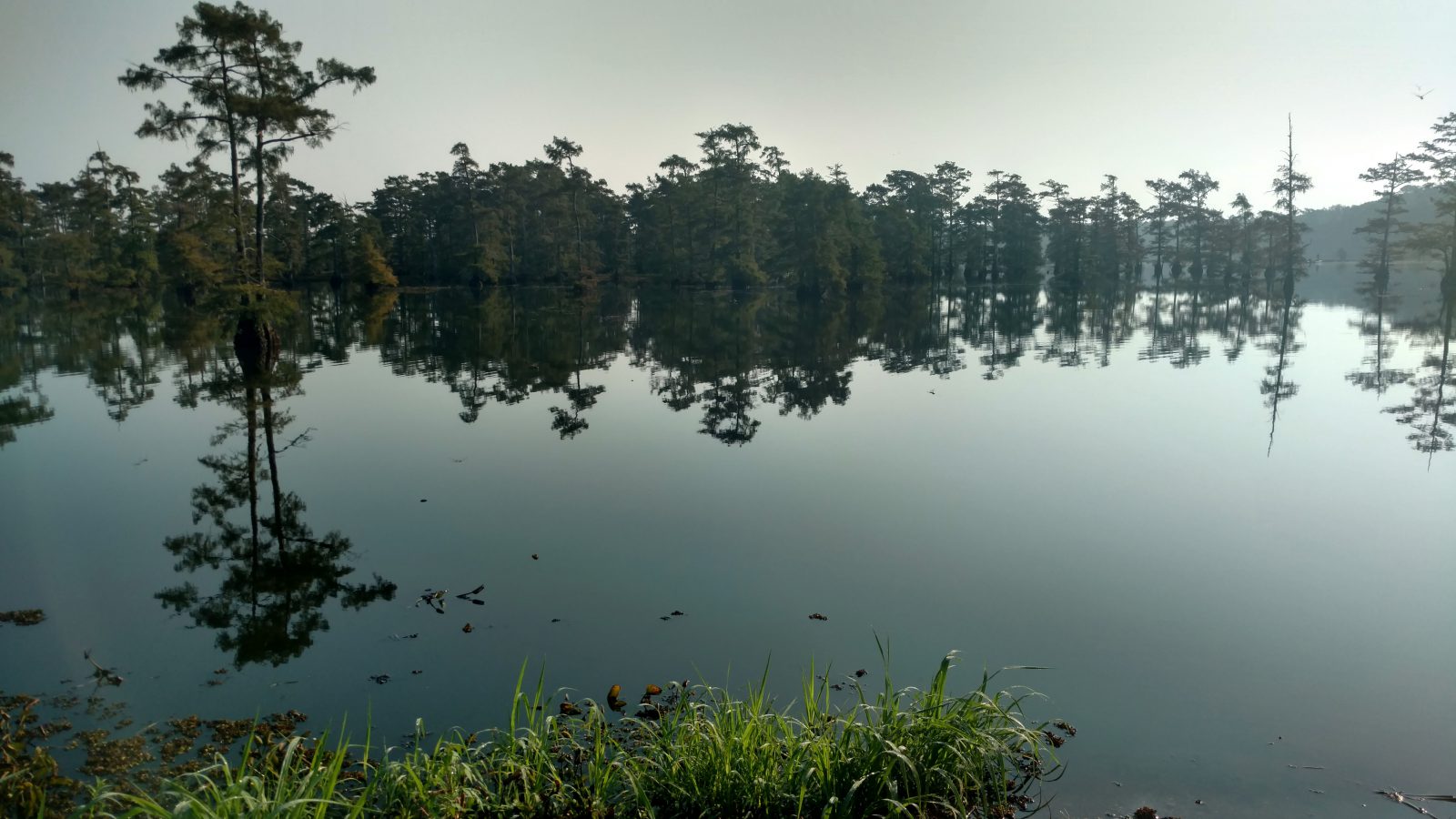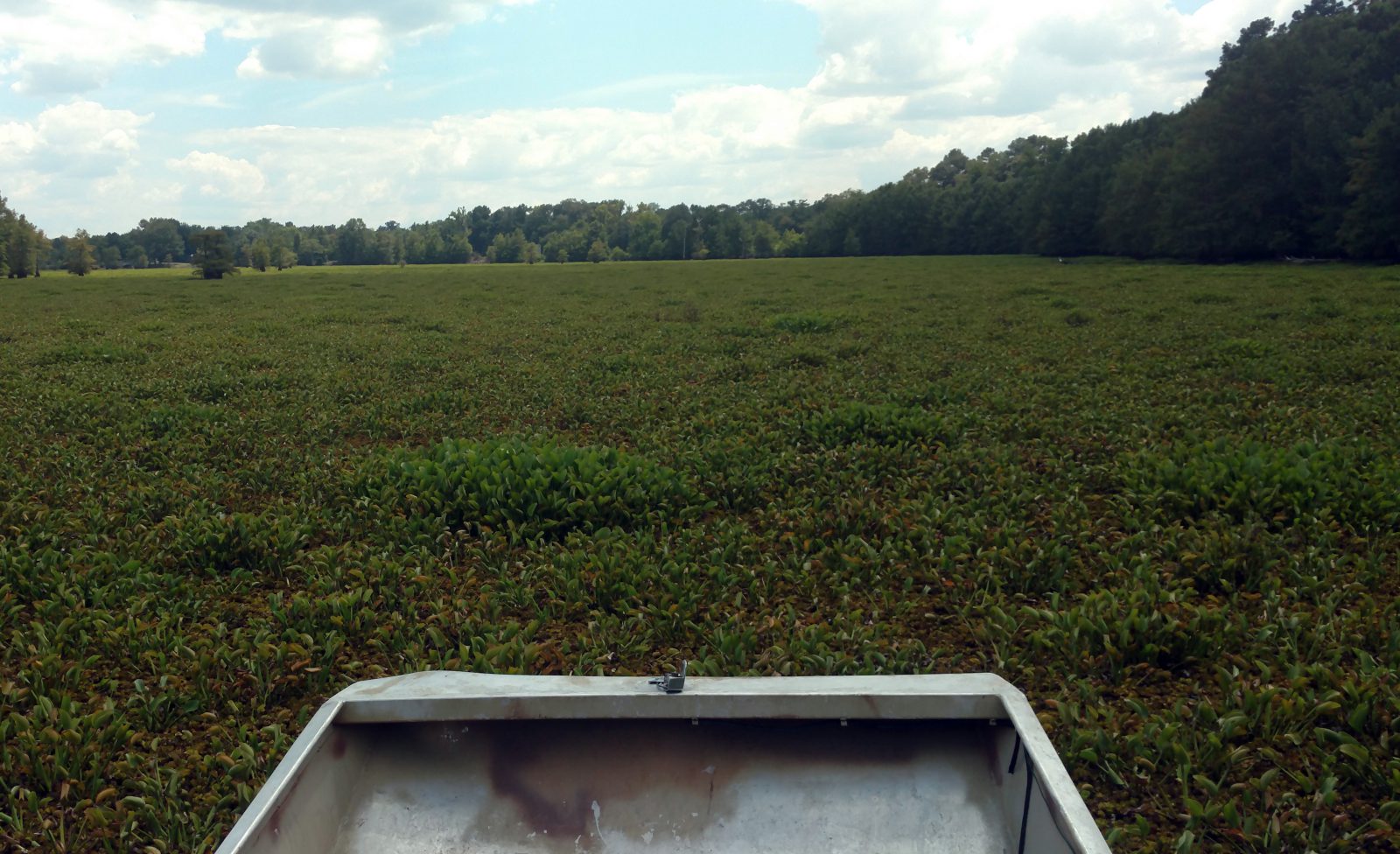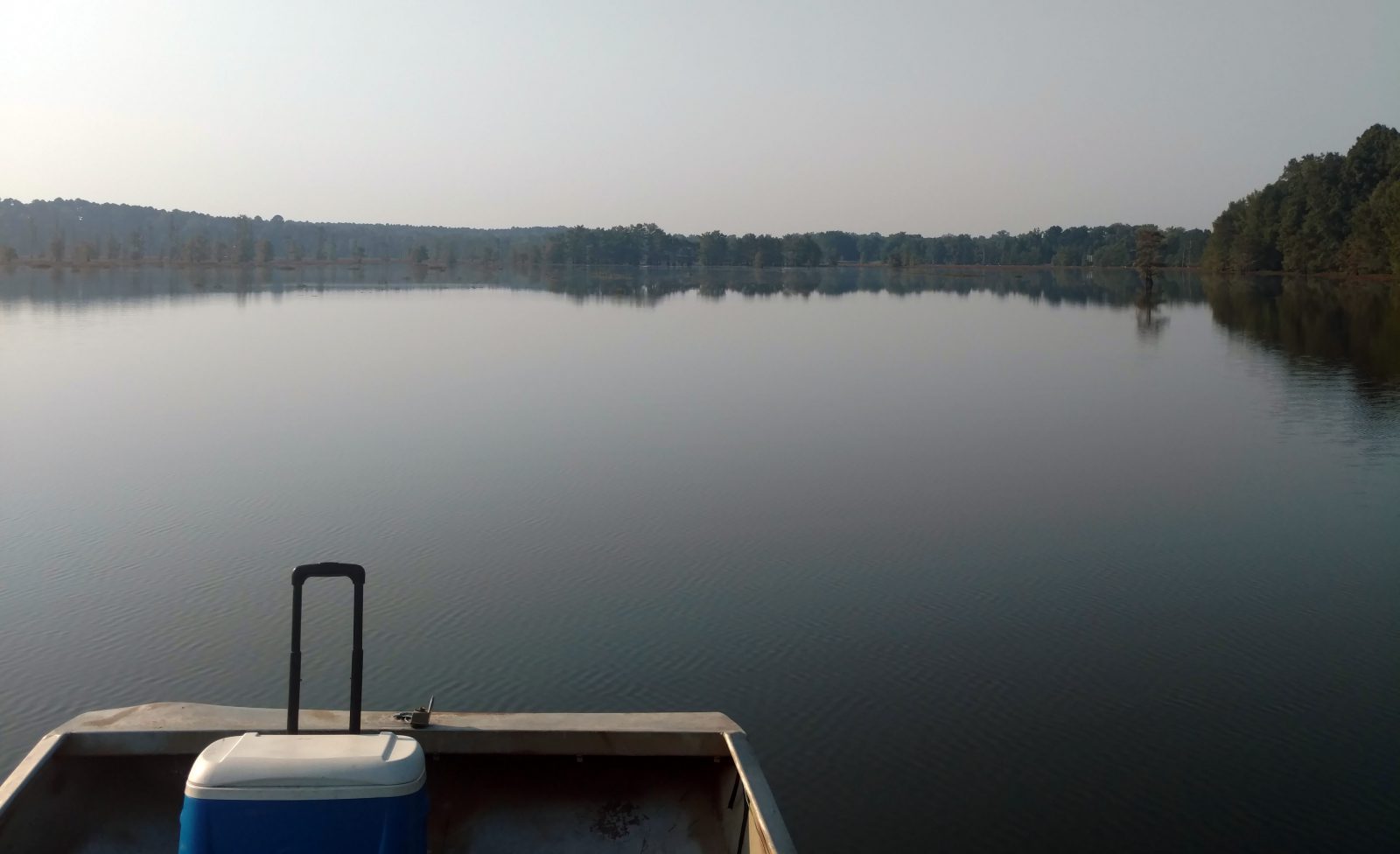
Large Lake Management In Bossier City, Louisiana | Weed & Algae Control Case Study
Location: Bossier City, LA
This waterbody is a 664-acre lake located on an airforce base near Bossier City, Louisiana. The lake is relatively shallow, averaging less than four feet deep, and serves as a valuable resource to the base and the surrounding communities by providing excellent fish and wildlife habitat as well as important recreational opportunities in the form of fishing, waterfowl hunting, and wildlife viewing. Historically, this lake has suffered from the excessive growth of a variety of plant species, but most notably, invasive hydrilla (Hydrilla verticillata), American lotus (Nelumbo lutea), and water hyacinth (Eichhornia crassipes). In recent years, however, giant salvinia (Salvinia molesta) has dominated the plant assemblage, reaching problematic conditions in 2017 with an estimated 500 acres of water covered in this invasive aquatic plant. To combat this extremely invasive plant, the SOLitude team decided to employ a volumetric management approach that was fairly experimental for an infestation of this magnitude.
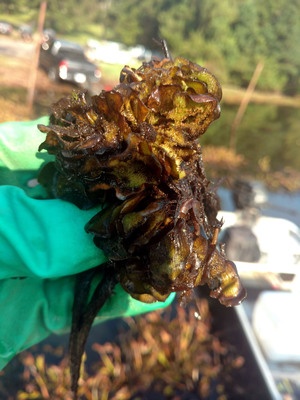
Giant Salvania
Giant salvinia is considered to be one of the most invasive exotic plants threatening reservoirs and other waterbodies in the southern U.S. Salvinia is capable of spreading rapidly, often doubling its biomass in only a matter of days. If left unmanaged, it not only has the ability to impair ecological balance but will readily spread to other waterbodies, as it can be easily transported by heavy downstream water flow and on the trailers of unsuspecting boaters. Given the increasing dominance of giant salvinia and its rapidly expanding cover, it quickly became the number one management priority for the natural resource officials at the base.
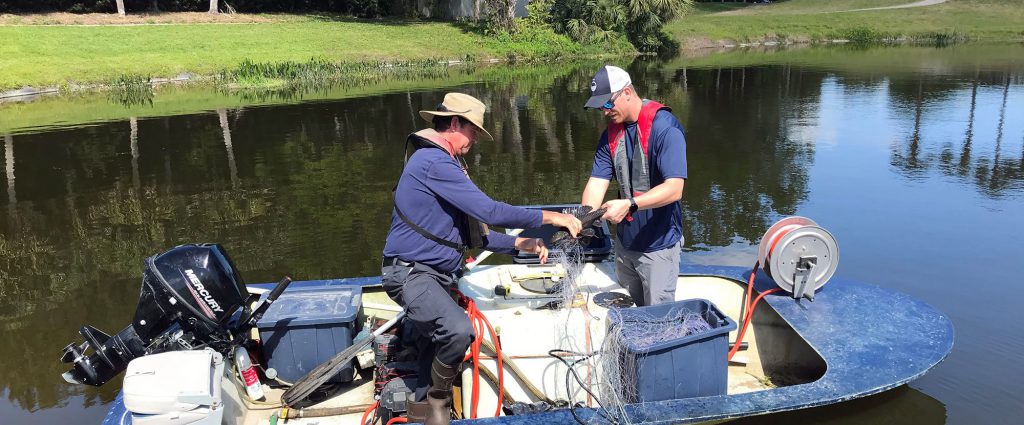
Site Description:
Prior to the giant salvinia infestation, SOLitude managed this waterbody using a foliar treatment approach—where herbicide is sprayed directly on the emerged leaves of the target plants. However, with the rapid growth of giant salvinia, we were fighting a losing battle while using foliar treatments. Because of the growth rate of the giant salvinia and limited long-term plant control being achieved by the foliar herbicide treatments, SOLitude proposed a volumetric treatment program that utilized a different EPA-approved aquatic herbicide.
As opposed to the foliar treatments, the volumetric management approach involved treating the entire lake with a properly concentrated dose of the new herbicide (designed to specifically target the invasive plant species). The volumetric approach eliminated issues of inaccessibility and plant movement associated with foliar treatment. And although this strategy carried a higher upfront cost, it was the only management approach that effectively addressed the long-term reduction of the invasive plants.

Project Description:
Before the new management plan began, the water level was lowered to reduce the risk for herbicide loss due to downstream flow. From there, the volumetric management plan involved two applications. The initial application was made in July of 2017 to achieve a lethal dose, after which the herbicide concentration was monitored to ensure that residues were suitable for plant eradication. Sample analysis following the treatment indicated that the herbicide concentration was effectively established and holding well. A “booster” treatment was then added in early September, in response to heavy rainfall from Hurricane Harvey.

The Treatment Results
Approximately one month after the initial treatment, significant plant discoloration and biomass reduction were easily observable throughout much of the lake. The timing of the booster application in response to the recharge of the lake volume allowed us to effectively maintain desirable in-lake herbicide concentrations. As a result of this extended concentration exposure time, the treatment program provided almost 100% control of water hyacinth and greater than 95% control of giant salvinia.
The high level of plant control achieved by this volumetric treatment program will undoubtedly have benefits through 2018 and significantly improve the potential to sustain vegetative balance in the lake. While preventative measures are the preferred management approach, the success of this treatment demonstrates a new and exciting long-term focused management strategy that can be employed throughout the country in areas where this highly invasive plant has already taken over
See The Results
- Weed & Algae Control Case Study #1
- Weed & Algae Control Case Study #2
